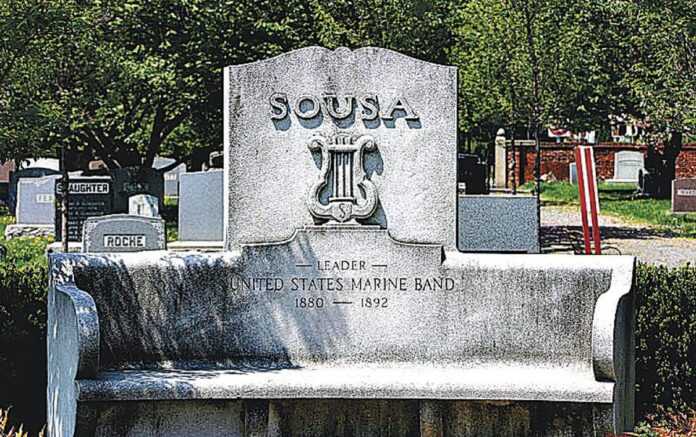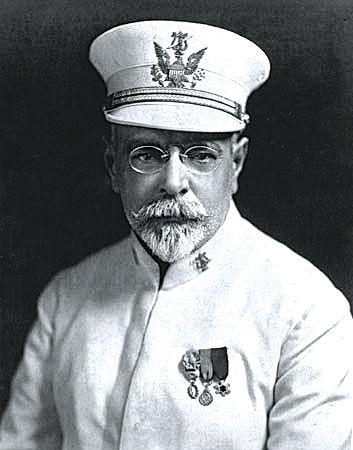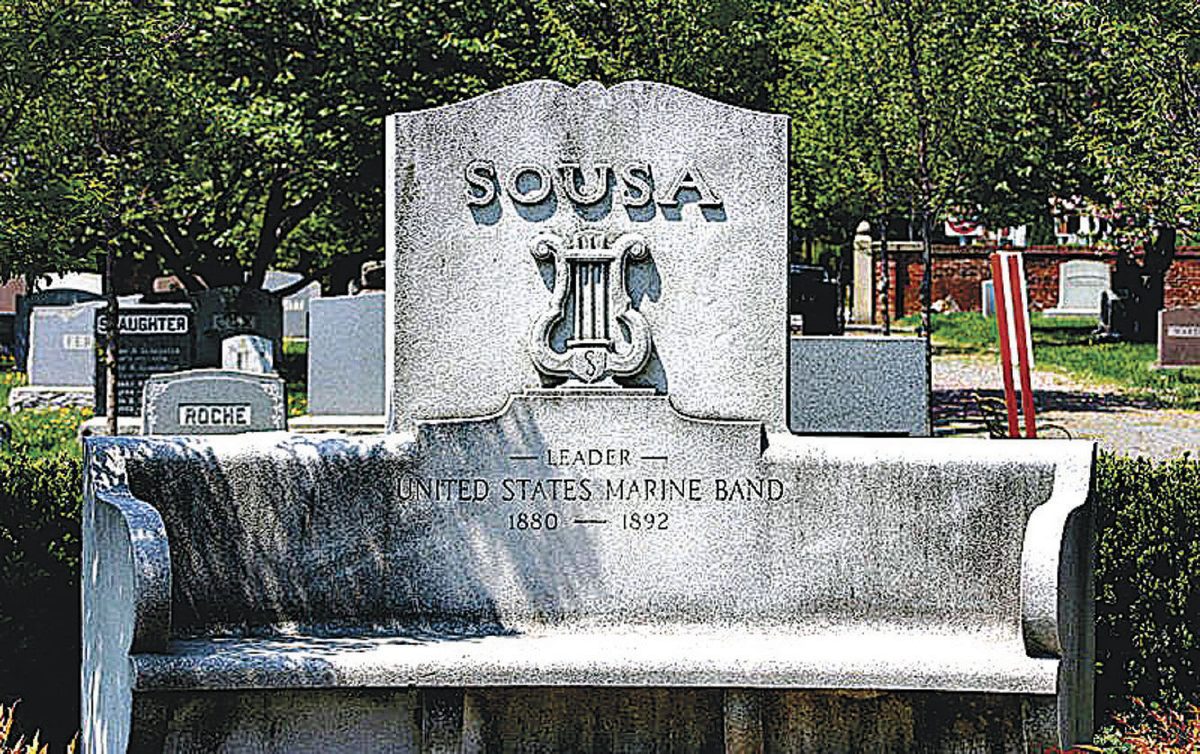BY NORMAN ROZEFF
As Johann Strauss II is honored with the sobriquet “The Waltz King,” so John Philip Sousa has been rightly bestowed the moniker “American March King.”
His most famous march compositions include:
“The Stars and Stripes Forever” (adopted in 1987 as the National March of the United States of America), “Semper Fidelis” (Official March of the United States Marine Corps), “El Capitan,” “The Thunderer” and “The Washington Post.”
He was born in 1854 in Washington, D.C., to a father of Portuguese-Spanish descent and a mother of Hessian ancestry. In his youth he studied violin and music theory, then, at the age of 13, his father, who was a trombonist in the Marine Band, enlisted him as an apprentice in the U. S. Marine Band.
He remained in this band until 1875 after which time he learned to conduct and write music. Eventually he rejoined the Marine Band and served as its conductor for 12 years. Following that tenure he organized his own band and toured as far afield as Europe and Australia.
Upon the outbreak of World War I, Sousa was commissioned a lieutenant and led the Naval Reserve Band in Illinois.
Being independently wealthy at this point in his life, he donated most of his naval salary, except a token $1 per month, to the Sailors’ and Marines’ Relief Fund.
In the 1920s he was promoted to lieutenant commander in the naval reserve, but never saw active service again. Upon the completion of his service he resumed conducting the Sousa Band that he had organized in 1892. He led his band for 40 years and was indisputably the most famous musical act in the world.
Sousa composed 137 marches, 15 operettas, five overtures, 11 suites, 24 dances, 28 fantasies, and 322 arrangements of 19th-century western European symphonic works. In addition he developed the sousaphone, a variation of a tuba that could project its sound upward and over the band.
“Sousa was an innovative musician. He was probably the first ‘Pops’ conductor in the modern sense, playing band arrangements of the classics and current light music as well as marches.
In 1900 he gave European audiences their first taste of American jazz when he introduced ragtime into his programs. This touched off a craze that influenced several important composers, notably Claude Debussy, Erik Satie, Maurice Ravel, Igor Stravinsky, and Darius Milhaud.”
The Sousa Band toured from 1892 to 1931, performing at 15,623 concerts in the United States and around the world. On October 23, 1928, in his 50th anniversary year as a conductor, Lt. Commander John Philip Sousa, the famous composer and band director, came to the Harlingen Municipal Auditorium with his 80 musician band to play a matinee and an evening concert.
With its 1,800 seats, the Harlingen Municipal Auditorium was at the time the largest venue of its type in the Lower Rio Grande Valley. Naturally, both performances were sold out. For the matinee offering, the School district awarded 1,000 tickets to deserving students. Sousa also took the time to evaluate a student band performance and individual solos.
The next year Joe Lyday, who was the high school band director, bragged that the band received national recognition for its accomplishments after the Sousa visit.
Naturally, Sousa received numerous honors, domestic and foreign, both during and after his death. During World War II the liberty ship SS John Philip Sousa was named after him. The ship’s bell is still used by the Marine Band in concert. The band hall of the Marine Band was dedicated as “John Philip Sousa Band Hall.”
As a hobby Sousa took up trapshooting. He ranks as one of the all-time greats, and is enshrined in the Trapshooting Hall of Fame. He organized the first national trapshooting organization, a forerunner to today’s Amateur Trapshooting Association.
At age 77, Sousa died of a heart attack on March 6, 1932, in Reading, Pennsylvania, where he had conducted a band rehearsal the day before. He is buried in the 35-acre, privately-owned pre-Civil War Congressional Cemetery in Washington, D. C. His wife, a son, and two daughters are buried alongside him in the family plot.
Harlingen was fortunate to have hosted this singular man and his renowned band. His appearance here remains part of the city’s forgotten history.






